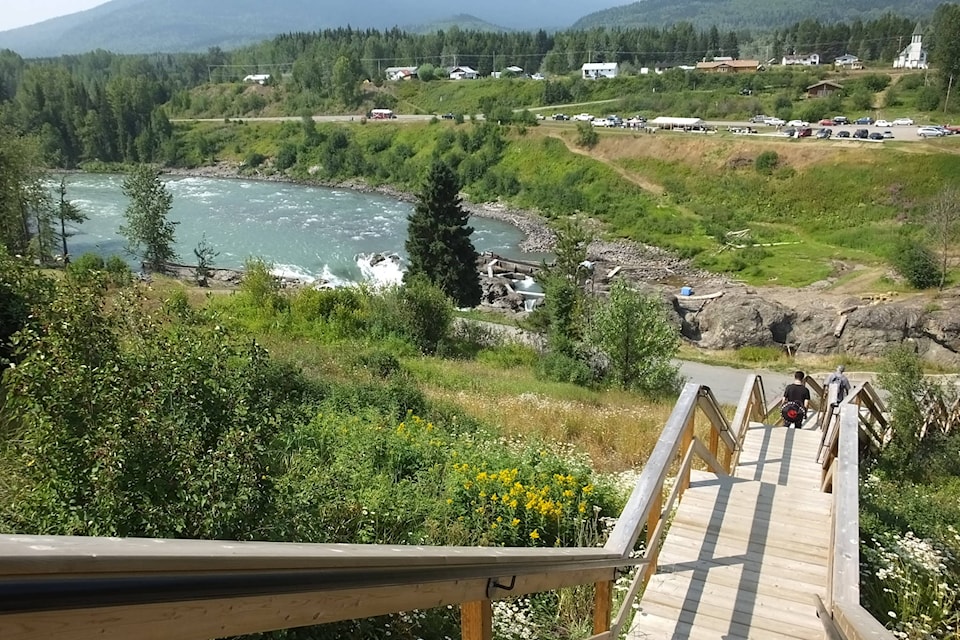Witset has been chosen for a new housing innovation program, which has committed $1 million to the development and construction of a restorative healing lodge and residence for at-risk youth aged 12-18.
Lucy Gagnon, Witset executive director, said it was very exciting and they were very proud to receive approval of the project through the federal Indigenous Homes Innovation Initiative (IHII).
“The biggest thing for myself is we’re one of 24 projects that were approved in Canada and four in B.C.” she said.
The initiative received 342 applications, an IHII press release stated.
“Applicants to the Indigenous Homes Innovation Initiative brought forward many amazing ideas that responded to unique geographic and distinction-based challenges on reserve, in urban centres and in remote, northern communities,” said Pamela Glode-Desrochers and Will Gooden, co-chairs of the IHII Indigenous steering committee in a prepared statement.
READ MORE: Fibre optic connectivity transforms Witset
“In choosing the 24 innovators for the Accelerator period, the Steering Committee sought to ensure First Nations, Inuit, Métis Nation and urban communities would benefit from new ways that respond to Indigenous social and housing realities. This included whether the need is for transition housing and wrap-around supports in urban centres, homes for youth and the elderly that build community and connection, and construction approaches that offer skills and development training to community members and use local services and products.”
Last week, Gagnon was in Parksville B.C. for “accelerator training.”
“The Accelerator will provide the innovators with mentoring support from Indigenous architects and other professionals to refine their ideas into implementable projects,” a press release stated.
Gagnon said the other projects were mind-blowing ranging from retrofitting and renovation to helping people deal with ongoing costs of living to a unique program to provide mortgages for people. They also included two others similar to the Witset proposal, one in Quebec and one in Toronto. She said the IHII has given them a collaboration tool, similar to Facebook, that will allow them to learn from each other as they advance their projects.
“It’s a new family and we’re the leaders in Canada on how to take care of our youth on First Nations land,” she said.
For Witset, the accelerator period is basically an exercise in producing a feasibility study and will include determining how many beds, whether it will serve male or female residents, eligibility requirements, program parameters, construction methods, community consultation, and identifying sources of construction and operational funding.
They have been given nine months to complete it.
READ MORE: B.C. Indigenous communities receive funding for hands-on trades training
“It does [feel like a tight timeline] when you consider other projects that have been done, but they’ve given us some tools,” Gagnon said. “We have a lot of work to do… but I think we can do it, I really believe that we can.”
Eligibility to stay in the residence will not be restricted to Wet’suwet’en youth, but Indigenous youth throughout the North, she said.
“It could be that they’re healing from trauma or they’re self-referred or they’re court ordered,” she said.
The proposal states the Lodge will use an Indigenous approach for rehabilitation, “including talking circles, Elder supports, sweat lodges with sweet grass, cultural outdoor activities, including a social enterprise component—therapeutic gardening that is also a source of food for lodge residents.”
The project, Gagnon said, is being partly informed by Camp Trapping, operated by the Cariboo Action Training Society in Prince George, which offers a four-month program for male residents.
“When we have visited there they say the youth up to two months are looking for ways to get out, but once they’re there two months and working on themselves, they don’t want to leave,” she said.
“It’s getting them ready for after, because you can’t just boot them out, you have to get them ready to go back into reality.”
Although the Camp Trapping program is a model, she said, details will be part of the feasibility study.
“We could extend the time depending on the circumstances,” she said.
The Witset proposal also seeks to incorporate passive construction, the standard for which requires buildings to be extremely well-insulated and air-tight and uses a heat recovery ventilator to transfer heat from outgoing stale air to incoming fresh air. The system drastically reduces energy consumption over traditional construction methods.
editor@interior-news.com
Like us on Facebook and follow us on Twitter
